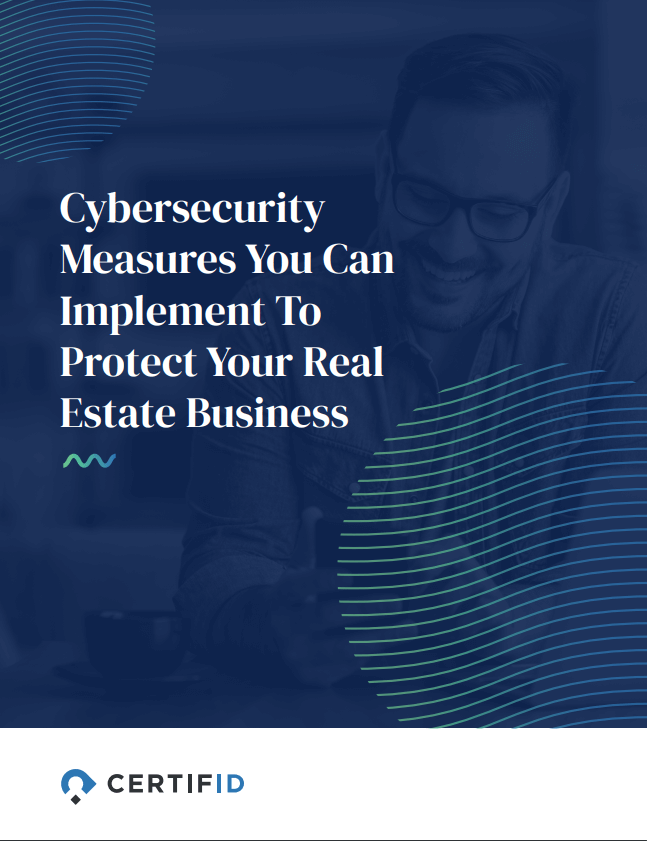Chapter 4
Understanding and Mitigating Risk
The above list of potential cyber threats is just a snapshot of what could be a much longer list.
This wide range of potential threats and the number of systems an organization needs to protect can make implementing cybersecurity a complex process. That’s why it is essential to understand the role of risk management.
Although cyber-risk management is a domain of knowledge in and of itself, organizational leadership needs to at least be aware of its role in managing information security given the potential for attacks.
Risk management can either be a formalized process in which specific systems, databases, and assets are evaluated for their vulnerabilities and attack risk or a decentralized process left to individual system owners.
In either case, organizations—especially those in the real estate market—need to know how to balance the risks and their associated impacts with the costs of the potential risk mitigation strategies.
For each system, the decisions on which risks to accept, mitigate, or transfer must be documented and reviewed regularly to determine if the assumptions that went into the calculation still apply.
Implementing Cybersecurity Best Practices
Armed with a foundation of cybersecurity principles, an understanding of common cyberthreats, and a framework to make decisions about certain types of risks, businesses can begin to implement cybersecurity best practices.
One way to get started is to consider cybersecurity controls that account for the people, processes, and technologies in your organization. For example, you could leverage a portfolio of cybersecurity tools and processes that:
1. Provide regular security awareness training.
According to one IBM security study, 30 percent of data breaches involve insiders, either unknowingly or maliciously.
This is why comprehensive security awareness training is a key tenant of cybersecurity, especially for those in the real estate industry that have access to a wide range of financial and personal data.
Not only will security awareness training help employees better understand the importance of their role in cybersecurity, but it will also enhance how they handle an incident and prepare them to respond to customers’ concerns about privacy.
2. Implement trusted security tools.
As is true of any criminal, a cybercriminal is often looking for the path of least resistance.
When cybercriminals are confronted with security tools that thwart their attacks and frustrate their efforts—such as antivirus and anti-spam tools that block suspicious activity and alert for unusual software or code—it is often enough to scare them off.
There are also more advanced tools designed for businesses in the real estate industry, such as CertifID. CertifID is a user-friendly platform that can confirm the identities of all parties involved in a real estate transaction.
CertifID sends a trusted message to the party, scans the end-user device, confirms their identity, and allows for information to be securely shared. This is especially important when it comes to wire transfers so funds can be accurately transferred.
3. Increase network defenses.
As businesses continue to trend toward remote operations, it is due time to address network defense. Businesses must secure individual computers and the network of devices that enable their web-based services, such as websites, emails, and file servers. If you haven’t done this yet, your business is at risk.
First, either take advantage of the built-in security features that come with modern operating systems—such as Windows Defender—or invest in an enterprise antivirus system. Second, utilize network and host-based firewalls to monitor traffic flow and prevent unauthorized access to certain systems, data, or websites. And, finally, consider leveraging an enterprise intrusion detection system that monitors network traffic for unusual behavior and flags it for further investigation.
4. Update and patch systems.
Despite their personas, not all cybercriminals conduct sophisticated, multi-stage attacks.
In fact, many cyberattacks leverage known system vulnerabilities that have been reported or patched by software and hardware manufacturers. Cybercriminals keep tabs on updates on patches for your critical systems, using them to exploit vulnerable systems that organizations have been slow to update.
It is critical to install the latest software updates recommended by your vendors. This is an easy but essential step to secure the systems you rely on every day.
5. Implement strong password management.
Passwords are highly sought after by cybercriminals. This is why organizations need to have and enforce strong password management policies.
In addition to changing the default passwords for your network and system devices, organizations should consider implementing multi-factor authentication and setting up password rules that enforce good password hygiene, such as:
-
Meeting character size and complexity rules.
-
Creating brand new passwords.
-
Regularly changing passwords.
And, perhaps most importantly, consider implementing a password manager such as 1Password, Keeper, or LastPass. At this point, it’s human nature to use (and re-use) short, simple passwords that are easy to remember. Thankfully, most of these tools can generate random, long, and complex passwords for each of your accounts, but only require one master password.
Password managers come with powerful encryption protocols that ensure your data is secure inside the vault—keeping criminals out and protecting your credentials. Get started with this essential tool today.

